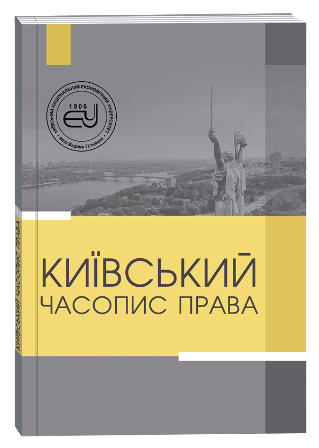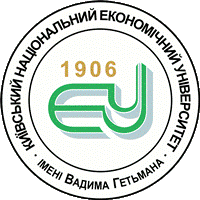THE STATE OF CRIME IN UKRAINE IN 2020–2022 (SEPARATE QUANTITATIVE AND QUALITATIVE INDICATORS)
DOI:
https://doi.org/10.32782/klj/2023.4.16Keywords:
crime, quantitative indicators of crime, qualitative indicators of crime, geography of crime, structure of crime.Abstract
Abstract. This scientific article is devoted to the coverage of quantitative and qualitative indicators of crime in Ukraine in 2020–2022 and their analysis, taking into account scientific and empirical methods. Analysis of the state of crime in Ukraine is carried out using statistical information on the number of criminal offenses for a certain period of time (month, quarter, year). However, only the comparison of quantitative indicators of criminal offenses for certain reporting periods will not provide an opportunity to obtain more detailed objective information about the criminogenic situation in the country, and therefore the use of quantitative and qualitative indicators of crime, such as the structure, nature and geography of crime, becomes especially important. Based on the statistical data of the General Prosecutor’s Office, crime indicators for 2020–2022 are given, where the dynamics of crime are presented, including by degree of severity, type of settlement, form of guilt, and indicators of individual violent crimes are also analyzed. The specified information is presented, including, in the form of tables. The criminogenic consequences associated with the full-scale invasion of Russia on the territory of Ukraine are outlined, as well as the impact of changes and additions to the Criminal Code of Ukraine on the criminogenic situation, possible determinants of quantitative and qualitative changes are determined. A general conclusion was made that during the last three years (2020–2022), the indicators mainly tended to decrease, but with the beginning of a large-scale war, the data for 2022 for many types of criminal offenses increased several times (including crimes against the foundations of national security; criminal offenses against peace, human security and international legal order; military criminal offences). On the basis of the conducted research, proposals were put forward for the prevention of criminal offenses at the general social, special criminological and individual levels. Proposed options for preventing crime in the future, reducing the number of offenses, taking into account the international experience of countermeasures and reducing the number of criminal manifestations of society, taking into account the European integration of Ukraine.
References
Конституція України: Закон України 28 червня 1996 р. № 254к/96-ВР. Верховна Рада України. URL: http://zakon.rada.gov.ua/laws/show/254%D0%BA/96-%Do%B2%D1%80 (дата звернення: 07.04.2023).
Кримінальний кодекс України: від 05.04.2001 року № 2341-III. Відомості Верховної Ради України. 2001, № 25–26, ст. 131. URL: https://zakon.rada.gov.ua/laws/show/2341-14#Text (дата звернення: 07.04.2023).
Про зареєстровані кримінальні правопорушення та результати їх досудового розслідування: Статистична інформація за 2020–2022 рр. / Офіційний сайт Офісу Генерального прокурора. URL: https://gp.gov.ua/ua/posts/pro-zareyestrovani-kriminalni-pravoporushennya-ta-rezultati-yih-dosudovogo-rozsliduvannya-2 (дата звернення: 07.04.2023).
Кримінологія: підручник / О. М. Джужа, В. В. Василевич, В. В. Чернєй, С. С. Чернявський та ін. ; за заг. ред. д-ра юрид. наук, проф. В. В. Чернєя ; за наук. ред. д-ра юрид. наук, проф. О. М. Джужі. Київ: Нац. акад. внутр. справ, 2020. 612 с.
Філософія правового виховання: навч. посіб. / А. П. Гетьман, О. Г. Данильян, О. П. Дзьобань та ін.; за ред. А. П. Гетьмана, О. Г. Данильяна. 2-ге вид., допов. Харків: Право, 2014. 248 с.







